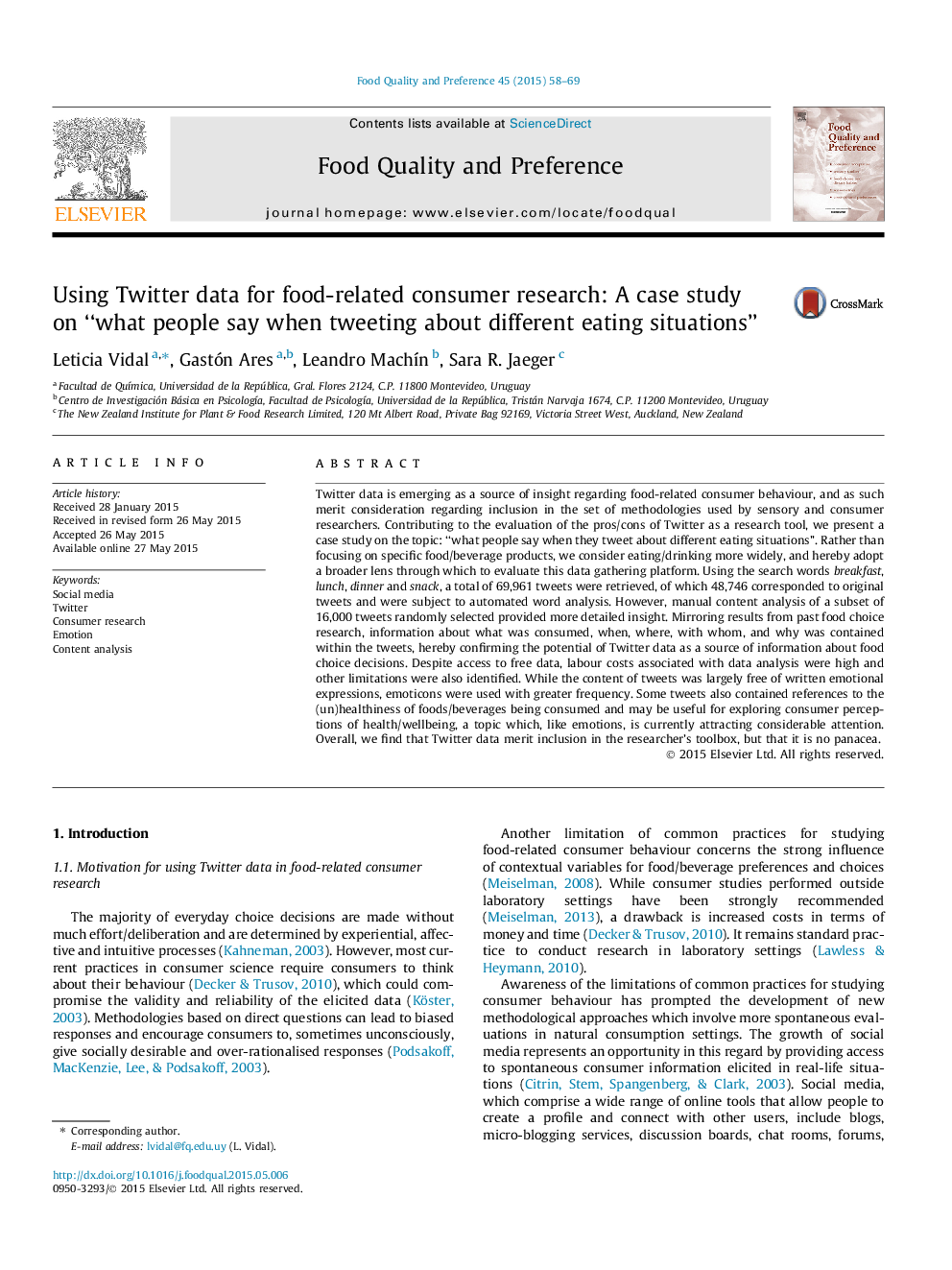| Article ID | Journal | Published Year | Pages | File Type |
|---|---|---|---|---|
| 4316923 | Food Quality and Preference | 2015 | 12 Pages |
•Twitter data for breakfast, lunch, dinner and snack occasions were analysed.•Manual content analysis was performed on tweets for deeper insights.•Contextual characteristics of eating occasions were frequently mentioned in tweets.•Emotions were rarely mentioned in tweets but emoticons are used with greater frequency.•(Dis)advantages of Twitter data for food-related consumer research are outlined.
Twitter data is emerging as a source of insight regarding food-related consumer behaviour, and as such merit consideration regarding inclusion in the set of methodologies used by sensory and consumer researchers. Contributing to the evaluation of the pros/cons of Twitter as a research tool, we present a case study on the topic: “what people say when they tweet about different eating situations”. Rather than focusing on specific food/beverage products, we consider eating/drinking more widely, and hereby adopt a broader lens through which to evaluate this data gathering platform. Using the search words breakfast, lunch, dinner and snack, a total of 69,961 tweets were retrieved, of which 48,746 corresponded to original tweets and were subject to automated word analysis. However, manual content analysis of a subset of 16,000 tweets randomly selected provided more detailed insight. Mirroring results from past food choice research, information about what was consumed, when, where, with whom, and why was contained within the tweets, hereby confirming the potential of Twitter data as a source of information about food choice decisions. Despite access to free data, labour costs associated with data analysis were high and other limitations were also identified. While the content of tweets was largely free of written emotional expressions, emoticons were used with greater frequency. Some tweets also contained references to the (un)healthiness of foods/beverages being consumed and may be useful for exploring consumer perceptions of health/wellbeing, a topic which, like emotions, is currently attracting considerable attention. Overall, we find that Twitter data merit inclusion in the researcher’s toolbox, but that it is no panacea.
